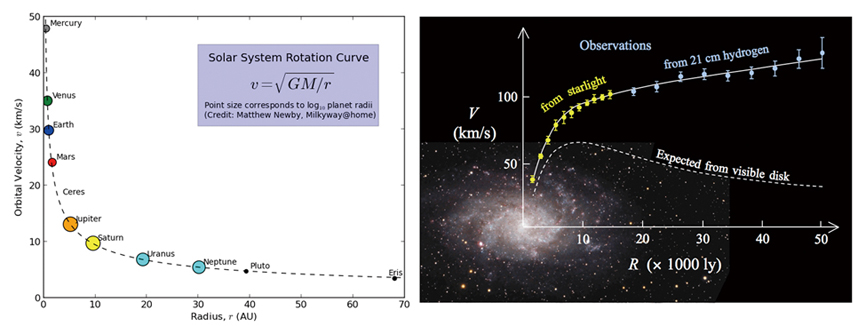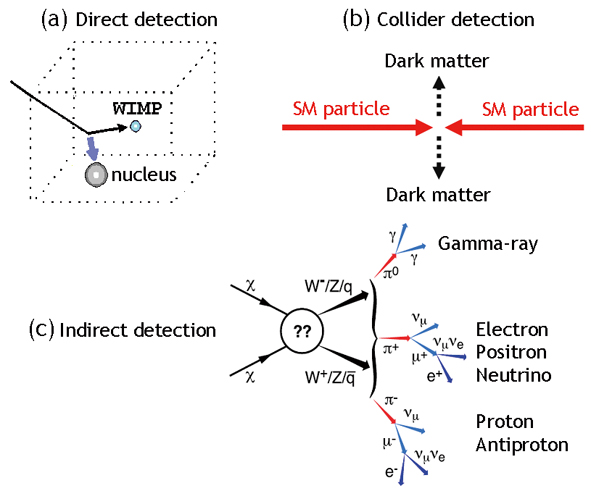YUAN Qiang
Purple Mountain Observatory, Chinese Academy of Sciences, Nanjing 210034, China
We have never reserved our efforts to understand the universe in which we are living. Through observing the movement of the Sun, the Moon and other celestial objects, we have mastered the laws governing the day/night alternation and seasonal changes, and applied them in agricultural production, calendar formulation, and time calibration. From the precise movement of planets, Kepler discovered the three laws of planetary motion, which later inspired Newton’s law of gravity. The invention of the telescope has greatly enlarged our vision, and guided our exploration of the universe going beyond the solar system and the Milky Way, and further extending afar into the depth of the universe. Figure 1 illustrates the hierarchical structure of the universe we have understood so far.

Figure 1: The hierarchical structure of the universe. (Credit: Addison Wesley)
Exploring the universe, two questions naturally come to us, i.e. what kinds of “matter” exist in the universe? How much is each kind of “matter”? To answer these questions, one has to develop the very fundamental technique to “weigh” (or measure the mass of) the celestial bodies. However, the celestial bodies fall far out of our reach. How could we measure their mass? Astronomers ingeniously propose that the masses of the celestial bodies can be derived from their movement, according to the law of gravity and Newton’s second law of motion. For instance, in the solar system, planets revolve around the Sun, approximately on circular orbits. Their speeds decrease with their distances from the Sun, in reverse proportion to the square root of the distance as described by the Kepler’s third law. The observations of planetary motions in the solar system do fit perfectly with this law, as shown in Figure 2 (left). According to the values given in this figure, we can make a simple calculation. For example, the distance between the Earth and the Sun is one astronomical unit, i.e. about 150 million kilometres, whilst the speed of the Earth revolving around the Sun is about 30 km/sec. Hence, we can obtain that the mass of the Sun is around 2×1030 kg. Naturally, we expect similar phenomena should occur on the galaxy scale, with the only difference that the Sun can be regarded as a point mass in the solar system, while the stars in a galaxy are more extendedly distributed. However, the observations are out of our expectation: the orbital speeds at which the celestial bodies revolve around the centre of the galaxy do not decrease with their distances from the centre as what we observe in the solar system (denoted by the dash line in Figure 2 (right)). Rather, the longer the distance is from the centre, the faster the speed goes (denoted by the green dots)! This suggests that there may exist some non-illuminating matter in the vicinity of the galaxy. Although we cannot see it, it does affect the movement of the celestial bodies through gravity. People call this inferred substance “dark matter”.

Figure 2: Orbital speeds of solar system planets versus their radial distances (left), and orbital speeds of celestial bodies revolving around the galaxy centre of M33 versus their radial distances (right). (Credit: Matthew Newby, Milkyway@home; wikipedia commons)
However, testis unus testis nullus – a single witness is not enough to corroborate a story, and an argument does not stand if supported only by evidence from a sole source. In reality, astronomers have observed a great number of phenomena that cannot be explained without introducing extra matter, ranging from the macro universe to dwarf galaxies. Such phenomena not only include those observed via measurement of celestial movements, but also in gravitational lensing, galaxy counting, and so on. A general picture we have established is that, only 5% of the universeis constituted by the ordinary matter, i.e. celestial bodies like stars and gases that are made up of atoms; 25% by dark matter as mentioned above; and 70% is constituted by dark energy which drives the accelerated expansion of the universe. Our universe is actually over-clouded by darkness. The physical nature of dark matter and dark energy, once unravelled, might herald revolutionary breakthroughs in fundamental physics.
As we know, black holes are a type of objects of extremely strong gravitational fields – so strong that even light cannot escape their gravitational pull, and have hence named “black” holes. From observations, we did find black holes in the universe, large or small. For instance, there is a supermassive black hole, whose mass is four million times that of the Sun, at the centre of the Milky Way. On the other hand, the gravitational wave signals detected by the Laser Interferometer Gravitational-Wave Observatory (LIGO), are direct evidence of the existence of stellar black holes. Presumed that there are black holes everywhere in the universe and they do not shine, can we explain the issue of “missing” matter?
At early stages, scientists did postulate that dark matter was a kind of nonluminous celestial bodies like black holes and some other celestial bodies of weak lumination. Such dark celestial bodies were termed “MAssive Compact Halo Objects” (MACHOs). MACHOs emit little or no light, and hence are difficult to be observed. Astronomers have invented a method to observe them indirectly. For an MACHO located between the Earth and a star, its gravitational force will deflect the light emitted by the star, and produce a phenomenon called micro-gravitational lensing. The more MACHOs are, the more frequently such micro-lensing events occur. Scientists did many of such searches, and eventually found that the number of MACHOs is far below the number needed to explain dark matter. Therefore, MACHOs or black holes might not be a promising way to explain the missing mass. Additionally, astronomical observations have also shown that the physical properties of the presumed dark matter should be different from ordinary matter, i.e. they cannot be composed of atoms that make up the ordinary world at all, otherwise, the appearance of the universe would be completely different from what is observed today.
If dark matter is not constituted by black holes or any other nonluminous objects made up of ordinary matter, most likely it is composed of a new type of particles that has not yet been discovered. Ordinary matter consists mainly of protons, neutrons and electrons, or more fundamentally, of quarks and electrons. In addition, stable particles in the universe include also photons and neutrinos. Via particle colliders and cosmic rays, we have also found a small amount of antimatter particles and a variety of unstable particles. Unfortunately, the properties of all these particles do not conform with the characteristics of dark matter revealed by astronomical observations. Therefore, it is very likely that dark matter is composed of one or more yet unknown new particles. In the mind of theoretical physicists, many models of new particles could play the role of dark matter. Among them, the most favourite class is named as the weakly interacting massive particle (WIMP).
The weak interaction is one of the four fundamental interactions of nature. A typical case of it is the interaction between the neutrino and matter. Indeed, as suggested by its name, the interaction could be so weak that neutrinos can hardly collide with any matter when traversing the entire visible universe. All evidence of dark matter obtained in astronomical observations has originated from the gravitational interaction. Dark matter obviously should not subject to the electromagnetic interaction or the strong interaction, otherwise we would easily observe it emitting electromagnetic radiations or colliding intensely with ordinary matter. Dark matter may subject to weak interaction, which is consistent with all observations so far. If this is true, it would be possible for us to detect dark matter in laboratory, similar to the fact that we can detect neutrinos via large experimental devices. Such interaction must be extremely weak. Therefore, it is very challenging to detect this special matter, and it requires detecting devices of very large scale and very high precision. Of course, it is also possible that dark matter does not subject to weak interaction at all. In that case we would have to accept that the only window to explore the nature of dark matter is closed.
Scientists have proposed several solutions to detecting WIMPs. The most straightforward one is to detect the collision between WIMPs and ordinary particles, e.g. nucleus. This collision is quite similar to the collision between billiard balls. The difference is, we cannot directly see the trajectory of the “white ball”, and have to infer its properties by observing the movement of the “colour balls” it has hit. This method is known as direct detection. If such collisions do exist, we would be able to observe the movement of the nucleus as products from the collisions, manifesting as ionization, luminescence or heat. At present, there are dozens of ongoing or planned experiments for the direct detection of dark matter all over the world. China is conducting two direct detection experiments, i.e. PandaX and CDEX, hosted in the Jinping Underground Laboratory, Sichuan.
The second solution is to knock out WIMPs with a high-energy particle collider. In the history of physics, Many new particles were discovered in this way, such as the J/ψ particle found by Professor Samuel Chao Chung Ting, and the “God Particle” – Higgs boson found by the large hadron collider (LHC) in 2012. If the colliding particles can mount to a high enough energy and number, there will be chances to produce dark matter particles. A problem of this method is, it requires the construction of a large-scale particle accelerator and is hence highly expensive.
The third solution is called indirect detection. It is theoretically predicted that WIMPs can self-annihilate or decay, and transform into ordinary matter particles. These particles may exist in cosmic rays, and hence can be detected in cosmic ray experiments. From the detected product particles from the self-annihilation or decay, we can deduce the properties of their father particles. In comparison with the previous two methods, this one seems to be more indirect. Nevertheless, these three ways each have their merits, and complement each other. Currently there are several indirect detection experiments in operation. At the end of 2015, China launched its DArk Matter Particle Explorer (DAMPE), also known as the “Wukong” satellite. The principal scientific goal of DAMPE is to reveal the properties of dark matter by making high-precision observation of cosmic rays. The principles for the three methods to detectWIMP dark matter are given in Figure 3.

Figure 3: Diagrams of three methods of detecting WIMP dark matter particles. (Image by YUAN Q.)
The Large High Altitude Air Shower Observatory (LHAASO), a large-scale basic research facility under construction in Daocheng, Sichuan, is an observatory for cosmic rays and gamma-rays. Situated at a site of high altitude, this facility boasts a wide field of view, a big area coverage of square-kilometre-level, and compound detecting technologies. It aims to measure cosmic rays by observing the secondary particles produced by the cascades of air showers induced by the high-energy cosmic ray particles in the atmosphere. With an altitude of over 4,400 m, LHAASO is well suitable to capture the well-developed air shower particles, and make accurate measurements. To accurately detect the secondary particles, LHAASO uses three different types of detectors, including a surface particle detector array (KM2A) covering 1.3 square kilometres, a water Cherenkov detector array (WCDA) covering 78,000 square metres, and 18 wide field Cherenkov telescopes (WFCTA). These three types of detectors can cross calibrate each other. LHAASO has a large field of view and can cover about 15% of the sky at any time. Taking advantage of the Earth’s rotation, it can cover almost the entire northern celestial hemisphere. The construction of LHAASO is scheduled to be completed in 2021. As planned for its first stage, 1/4 detectors of the array have been completed and put into operation in 2019. It is expected to make breakthroughs in understanding many important questions in physics and astrophysics.
LHAASO will also be an excellent probe of dark matter through the detection of gamma rays. Its advantages for dark matter detection could be seen in two aspects. Firstly, LHAASO covers a higher energy band compared with existing experiments. LHAASO is able to observe gamma rays with energies between hundreds of GeV to one million GeV. Particularly, for the energies above 10,000 GeV, it can achieve the highest sensitivity in the world. If dark matter happens to fall in such a high-energy window, LHAASO will be the best detector in the world. Its large field of view endows it a second advantage. We cannot predict with sufficient accuracy at which regions the signals would be the strongest (or reach the highest signal-to-noise ratio). Although places like the Galactic Centre are most likely to be highly concentrated with dark matter, the Galactic Centre is typically not the best choice for dark matter detection, given that the astrophysical radiation there is also very strong. Dark matter can form a large number of substructures in the Milky Way, and they may be randomly distributed in various places. If the detector’s field of view is large enough, the possibility of missing the signals will be significantly reduced. LHAASO can cover almost the entire northern celestial hemisphere, which is very important for the detection of dark matter.
Dark matter detection is one of the most popular topics of the physics frontiers. Dozens of related experiments are ongoing over the world. Over the past few years, China has deployed a series of experiments in this field to conduct relevant research. Among them are the “Wukong” satellite in the space, the LHAASO experiment on the ground, and the Jinping experiment under the ground. Some of the results from these experiments have reached the highest level in the world. Hopefully in the near future, China will make breakthroughs in the detection of dark matter and open a new window on physics.
(Translated by ZHANG Ling)

